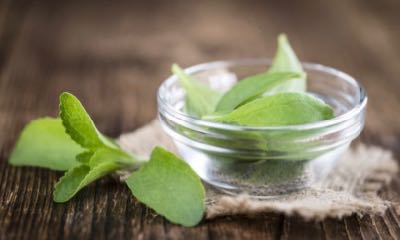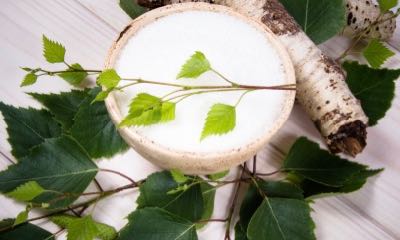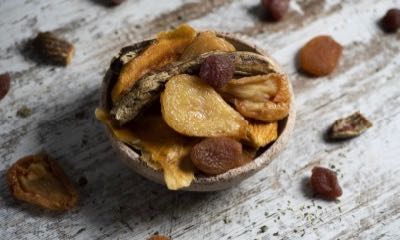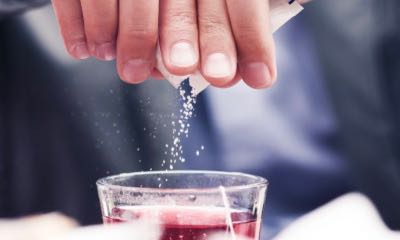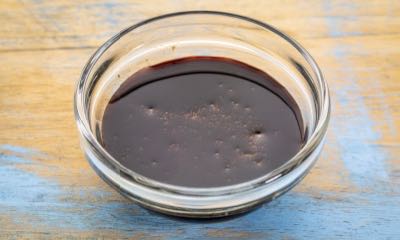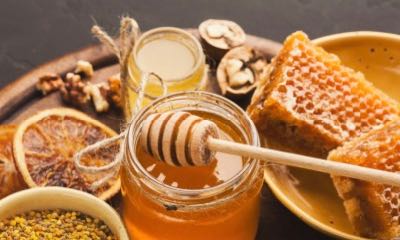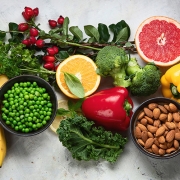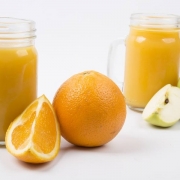Too Good to Be True? The Skinny on Alternative Sweeteners

Let’s face it, sugar is delicious—especially if you have a sweet tooth. But it’s clear a diet high in sugar isn’t great for your health or weight. Alternative sweeteners or sugar substitutes have emerged in recent decades as an option to cut back on table sugar while still enjoying the same sweet sensation. The truth, though, is a lot more complicated.
One of the reasons sugar can be so detrimental to health is that it can add up quickly. Sugar contains nearly four calories per gram. The average 12-ounce (355 ml) can of soda contains 39 grams of sugar. So, that’s 156 calories!
In other words, you don’t have to consume many sugary foods to get a huge dose of calories. And the more calories you consume, the harder your body has to work to burn them off. If calories aren’t burned, that can translate to weight gain.
Alternative sweeteners typically contain far fewer calories per gram. That’s what makes them so appealing for those looking to limit calories without suffering sweets withdrawals.
Luckily, you have a lot of choices.
Table Sugar: Glucose and Fructose
Before the conversation shifts to alternatives, let’s talk about the real thing—simple table sugar. It is by far the most widely used sweetener, over 175 million metric tons were consumed worldwide last year.
Table sugar, or sucrose, is what is called a disaccharide. That’s a carbohydrate made up of simple sugars called monosaccharides (made of a single sugar molecule, which makes a disaccharide those sugars made of two saccharides). In this case, the monosaccharides are glucose (also known as dextrose) and fructose.
As already discussed, sucrose isn’t the healthiest substance to consume in large quantities. The body breaks it down into glucose and fructose. And the glucose is quickly absorbed into your bloodstream. This often results in a quick boost of energy, but makes it a poor choice for those looking to maintain their healthy, normal blood-sugar levels.
But what about the primary components of sucrose—glucose and fructose? Both are among the most abundant simple sugars on the planet. They’re present in many fruits, vegetables, and even honey. Both are also available in refined forms. Glucose doesn’t have the same sweetness level as sucrose, because it doesn’t contain fructose. Fructose has the ability to easily adhere to the sweetness receptors in your mouth. But both fructose and glucose contain a similar number of calories as sugar—about four per gram.
Glucose’s ability to quickly raise blood sugar levels also makes it a trigger for the release of insulin. Insulin is a hormone made in your body that allows sugar (glucose) from carbohydrates to enter cells for use as energy. This is a big reason why glucose is used as the reference food for Glycemic Index (GI) testing. GI is a test designed to measure how quickly a carbohydrate food raises blood glucose levels compared to glucose. Consuming pure glucose is not suitable for most people. Although the sweetener can be ideal for athletes or those needing quick energy during a workout.
You’ll find glucose as a common additive in foods because it is easy to produce. That comes from the fact that it can be derived from starches like potatoes and rice.
Fructose, meanwhile, has a higher sweetness level than both glucose and sucrose, nearly 1.7 times that of normal table sugar. It’s the sweetest of the naturally occurring sugars. Fructose is commonly found in fruits, vegetables, fruit juices, and makes up part of honey.
Like other simple sugars, a diet rich in fructose could lead to weight gain and potential health problems. Fructose must be converted to glucose in the liver before it can be used for energy. So, it doesn’t raise blood-sugar levels as quickly. Because the body processes fructose differently than other sugars, an excess of fructose could contribute to higher levels of triglycerides and cholesterol, and could cause the liver to store excess fat.
Now that you have a good idea about regular table sugar, let’s dig into some of the most popular sugar substitutes.
Stevia: A Potent Plant
One of the most widely used alternative sweeteners is derived from Stevia rebaudiana, a shrub native to South America. Stevia is anywhere from 100 to 300 times sweeter than sugar, but contains zero calories. It also doesn’t raise blood-sugar levels. That makes it a good choice for people who want to support healthy blood-sugar levels already in the normal range.
Stevia leaf and extracts are classified by the U.S. Food and Drug Administration (FDA) as a “dietary supplement,” but have not been granted Generally Regarded as Safe (GRAS) status yet. However, Rebaudioside A—one of the chemicals in stevia—was granted GRAS status in 2008, and is used as a “food additive” and sweetener.
There are no known serious adverse health effects from stevia observed during human trials. There are, however, some commonly reported side effects. They include bloating, nausea, and a bitter aftertaste.
Xylitol: Best for Oral Care
Xylitol is what’s known as a sugar alcohol—a carbohydrate found in many different types of fruit. Don’t let the name fool you though, it doesn’t contain any of the alcohol most are familiar with.
Xylitol does have a sweetness very similar to sugar with about 40-percent fewer calories. It also doesn’t have a noticeable effect on blood-sugar levels.
Some studies have indicated that xylitol may support dental health, which is why you will find it in many different types of chewing gum and oral-care products. The bacteria in your mouth also can’t feed off of xylitol, which may help maintain good oral health and hygiene.
There are a few concerns with xylitol, though. It doesn’t break down in your gut as efficiently as sugar does. So, if you consume it in a high enough dose, it can cause diarrhea or gastrointestinal pain. The U.S. FDA has granted xylitol GRAS status. But it can be highly toxic to dogs, so be careful if you have pooches at home.
Erythritol: Great for Taste
Another sugar alcohol, erythritol, is also found naturally in many different fruits. Erythritol has about 70 percent of the sweetness of sugar, at a fraction of the calories. With 0.24 calories per gram, it contains six percent of the calories of sugar.
One of the major advantages of erythritol as an alternative sweetener is that it tastes remarkably similar to sugar. It manages to do this without having major effects on blood sugar, either. So, it’s another good sugar alternative for those looking to maintain healthy blood sugar already in the normal range.
The human body does not have the ability to break down erythritol, so most of what is consumed is excreted unchanged.
The powdered, commercially available form is produced by industrial methods. And it was granted GRAS status in 2001.
As with most sugar alcohols, consuming a large amount can cause gastrointestinal discomfort. Several studies have shown that erythritol does seem to be better tolerated by the body than other alternative sweeteners.
Two More Sugar Alcohols: Mannitol and Sorbitol
Mannitol is another sugar alcohol that has a variety of uses, particularly in the pharmaceutical field. It’s most commonly used as a diuretic (which helps your body expel salt and water). And mannitol has many other medical applications, to go along with its role as an alternative sweetener.
Mannitol has roughly 40 percent of the calories of sugar, but only about half of the sweetness. This makes it a poor choice for those counting calories. However, mannitol isn’t absorbed into the bloodstream quickly, which makes it an ideal choice for people concerned about maintain healthy blood-sugar levels already in the normal range.
It is also nonhygroscopic, which means it doesn’t absorb any moisture from the atmosphere until the humidity level is above 98 percent. This makes mannitol effective as a hard coating for candies, chocolate flavors, dried fruits, and chewing gums. Like other sugar alcohols, it can have a laxative effect in high doses.
Sorbitol is a sweetener with an abundance of commercial and culinary applications. This sugar alcohol does occur naturally in many fruits like pears, apples, peaches, and prunes. Technically, sorbitol is not an artificial sweetener, but, as an additive, it’s most often highly processed.
Sorbitol contains about 2.6 calories per gram, or about 65 percent that of sugar. Like mannitol, it has roughly half of the sweetness. So, there are better options for people on a low-calorie diet. Similar to other sugar alcohols, sorbitol is good choice for those concerned about supporting healthy blood-sugar levels already in the normal range. That’s because it isn’t absorbed by the body quickly.
Sorbitol is popular in the production of sugar-free products like chewing gum, mints, and toothpaste. One non-sweetener benefit is it can control moisture content and act as a preservative. Sorbitol also doesn’t metabolize in the mouth, so bacteria can’t feed on it. This is another reason why it’s commonly found in chewing gum. Like other sugar alcohols, it can have a laxative effect.
Aspartame: Controversial and Effective
You may have seen aspartame marketed as Nutrasweet® or Equal®. Under either name, this artificial sweetener has become somewhat controversial over the years. Anecdotal evidence abounds on the internet blaming the substance for everything from hair loss to more serious health issues.
There was some early research done in Italy that linked aspartame to certain types of health problems in rats. But later evaluation of the data cast doubt on the research. To date, there have been no studies linking aspartame to any adverse health effects, and the U.S. FDA has granted it GRAS status.
Aspartame has roughly the same number of calories per gram as normal sugar—around four. But it’s 200 to 300 times sweeter, which means the same sweetness level can be achieved by using a small amount of aspartame.
Like most low-calorie sweeteners, aspartame doesn’t have an effect on blood sugar. People working to maintain healthy blood-sugar levels already in the normal range have been using it for years. And it’s one of the most common artificial sweeteners on the planet.
It should be noted that individuals with the rare genetic defect known as phenylkenoturia (PKU), should avoid aspartame altogether. Aspartame contains the amino acid phenylalanine. People with PKU (a genetic disorder) can’t metabolize the amino acid phenylalanine efficiently and must avoid it. If blood levels get too high, neurological, behavioral, and dermatological problems can occur.
Maltodextrin for Sweetness?
Maltodextrin is a white powder produced from a variety of starches like rice, potatoes, wheat, and corn. It is a common food additive, typically used as a thickener to increase the volume or consistency of a processed product. It’s easy to produce, you can find maltodextrin in everything from gelatins to sauces, salad dressings, powdered drinks, and even lotions or shampoos. It’s also used as a preservative.
Maltodextrin is generally tasteless and contains a relatively low amount of sugar. But it’s still highly caloric—around four per gram—and is highly processed. Maltodextrin is also absorbed into the blood stream quickly, which makes it a poor choice for people concerned about maintaining healthy blood-sugar levels.
But maltodextrin is a quickly digested carbohydrate. That makes it an excellent ingredient in sports drinks and energy bars. Since it also doesn’t require a lot of water to digest, you can get efficient calories without risking dehydration.
Yacon Syrup: Great for Gut Health
Yacon syrup is an alternative sweetener that has recently become very popular as a weight-loss option. It is derived from the yacon plant, also called Smallanthus sonchifolius, which is native to South America. And the syrup has received GRAS status.
Unlike many other alternative sweeteners, yacon syrup does contain some sugar in the form of fructose, sucrose, and glucose. These sugars give yacon syrup its sweet taste—similar to molasses. It’s still a sweetener that is very low in calories, though, packing about 1.3 calories per gram. That’s about a third as much as sugar.
Yacon syrup is primarily composed of what are known as fructooligosaccharides, a type of soluble fiber. These fibers aren’t digested when consumed. Instead, they make their way down the large intestine, where they can feed the helpful bacteria in your gut. Many studies have indicated that having healthy gut flora has positives for overall health—including weight management and immune support.
Yacon syrup is a sugar alternative that isn’t capable of handling the high temperatures associated with cooking or baking. So, just use it to flavor already cooked or raw foods.
What About the Health Benefits of Honey?
Humans have been eating and enjoying honey for millennia. And it is often advertised as superior to sugar. The truth is that honey still contains a large amount of sugar. It comes in the form of glucose and fructose, which means honey carries some of the same problems as normal table sugar when overconsumed.
Honey contains roughly 75 percent of these common sugars, with the remaining 20 to 25 percent split between water and traces of fat, fiber, and protein. With 3.34 calories per gram, honey has slightly fewer calories then sugar. But it’s also denser than sugar. This means if you flavor your coffee or tea with a tablespoon of honey, instead of a tablespoon of sugar, you would actually consume more calories.
What sets honey apart from other sweeteners is that it contains antioxidants like vitamin E. Dark buckwheat honey and other floral honeys tend to have the most antioxidants. And consuming antioxidants is important. They can help support overall health by fighting free radicals in the body.
Just make sure you aren’t relying on honey as your sole source of antioxidants. That would mean you have to consume a lot of honey to meet your needs. This would put you well over the daily recommended amount of sugar. Most fruits and vegetables contain antioxidants in significantly higher concentrations and are more important to a healthy diet.
Honey is considered safe for most. There is a risk of botulism that is rare, but potentially life threatening, if honey is consumed by infants. So, don’t give honey to children younger than 12 months old.
Honey is also available in powdered form. Because liquid honey has the ability to absorb moisture in the air, the sugars can ferment and cause it to spoil. This is why regular honey is best kept in a sealed container.
This isn’t a problem with honey powder. It is very shelf stable and will last for years. Honey powder does really well as a replacement for honey when used for baking. It doesn’t brown as quickly as normal honey.
If you’re going to use honey powder, just be mindful to check the ingredient label. Make sure it’s the pure stuff. It can often include additives that aren’t as healthy as the powdered honey itself.
| Alternative Sweeteners and Your Skin
Sugar frequently makes the lists of food to avoid if you’re interested in healthy skin. There are many popular links to skin issues with sugar-filled diets, but the scientific evidence isn’t crystal clear. There appears to be a link between acne and high glycemic diets, although more research is needed to confirm. But how do alternative sweeteners effect your skin? There isn’t concrete evidence in studies that show alternative sweeteners impact skin. The advice that is scientifically validated will sound familiar. Eat a wholesome diet with plenty of veggies and fruits is a good way to support healthy-looking skin. |
Be Mindful About Your Use of Alternative Sweeteners
If you’re choosing between alternative sweeteners, there are a lot of factors to consider. Safety, effectiveness, and potential side effects are important. One positive side effect seems to make honey and yacon syrup better bets for your health. That’s because they can be helpful to your gut flora.
Because many alternative sweeteners are significantly more potent than sugar, it’s possible that your sugar receptors may become overstimulated. If you become dependent on something so sweet, it’s likely you could find genuinely healthy foods, like fruits and vegetables, less appealing.
While it’s nearly impossible to completely avoid sugar, the good news is you don’t have to. Naturally occurring sugar can be found in many foods, and is a healthy part of a balanced diet. An apple, for example, has a high amount of sugar, but also contains fiber and various micronutrients that offset many of the negatives from the sugar. The danger comes from the added sugar found in many of your foods, usually included by manufacturers to enhance flavor.
Whether you are dieting, concerned about your skin, or have other health issues, there can be a role for naturally occurring sugar and healthy alternative sweeteners. But moderation is always the most important consideration. Just because you use alternative sweeteners, doesn’t mean you can consume excessive amounts of sugar in other places. In other words, don’t reach for the donut just because you drank a diet soda.
References
https://www.webmd.com/vitamins/ai/ingredientmono-682/stevia
https://link.springer.com/article/10.1023%2FA%3A1008134420339
https://www.ncbi.nlm.nih.gov/pubmed/19961353
https://www.ncbi.nlm.nih.gov/pubmed/10971305 https://www.ncbi.nlm.nih.gov/pmc/articles/PMC2900484/
https://link.springer.com/article/10.1007%2FBF00282594
https://www.ncbi.nlm.nih.gov/pmc/articles/PMC3654758/
https://www.webmd.com/vitamins-and-supplements/xylitol-uses-and-risks#1
https://www.ncbi.nlm.nih.gov/pubmed/17014359
https://www.ncbi.nlm.nih.gov/pubmed/8039489
https://www.ncbi.nlm.nih.gov/pubmed/16277764
https://www.cancer.org/cancer/cancer-causes/aspartame.html
https://www.webmd.com/food-recipes/features/truth-artificial-sweeteners#2
https://www.ncbi.nlm.nih.gov/pubmed/12583961
https://www.ncbi.nlm.nih.gov/pubmed/17183309, https://onlinelibrary.wiley.com/doi/full/10.1111/j.1365-2982.2010.01664.x
https://www.ncbi.nlm.nih.gov/pubmed/12502412
https://www.ncbi.nlm.nih.gov/pubmed/12358452
https://www.tandfonline.com/doi/abs/10.1080/00218839.1998.11100951
https://www.medicalnewstoday.com/articles/301506.php
https://kidshealth.org/en/parents/botulism.html
https://www.reuters.com/article/us-sugar-usda-supplies/world-2017-18-sugar-production-consumption-seen-at-record-usda-idUSKBN1DH2LV
https://efsa.onlinelibrary.wiley.com/doi/abs/10.2903/j.efsa.2011.2223
https://www.medicalnewstoday.com/articles/323818.php
https://www.ncbi.nlm.nih.gov/pmc/articles/PMC3695375/
https://www.medicalnewstoday.com/articles/322426.php
http://doi.org/10.1371/journal.pone.0052132
https://www.sciencedirect.com/topics/neuroscience/mannitol
https://www.sweetdefeat.com/blog/what-you-need-to-know-about-sorbitol
http://www.naturalsweetrecipes.com/all-about-powdered-honey/
https://www.ncbi.nlm.nih.gov/pmc/articles/PMC6034916/




